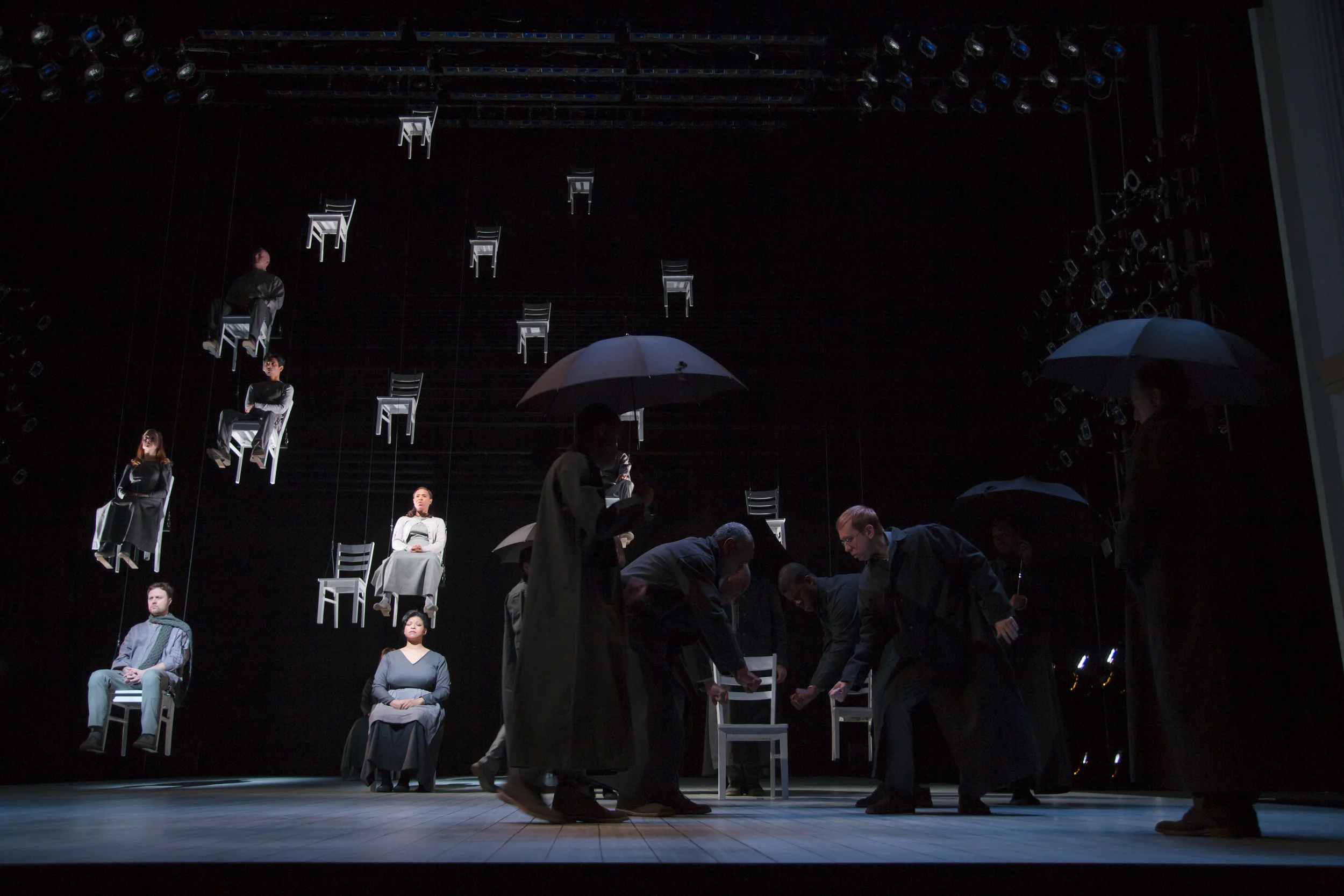


Flying Systems
D2 Flying Effects has the equipment to provide dozens of different types of flying systems. Each system we provide is specifically designed to meet the particular needs of your production. There is no "one size fits all" system when it comes performer flying systems. Our experienced flying directors will determine which systems best meet your production needs, based on your desired effects and the specifications of your theatre.
To help our clients have a better understanding different flying systems, we have provided a general description of some of the basic categories of flying systems that we can provide:
Pendulum Systems
Single-wire pendulum systems are the simplest type of flying systems and are often used in PETER PAN for Peter’s flight through the window and later used by the Darling children. They typically require only one operator per system. For more acrobatic pendulum flights (somersaults) we can use a two-wire variation (commonly used in dance productions).
In order to provide fast ascensions, pendulum systems typically do not use any mechanic advantage. This works well for lightweight performers. However, for heavier performers we typically add some variation of counterweight assist (depending on the height of the stage). This still permits relatively fast ascensions by the performer but may require a second operator.
Unlike standard pendulum systems inter-related pendulum systems allow some control of the horizontal movement of the performer, although not as much as with a track system. While an inter-related pendulum system requires less hardware than a track system, they do not work well in theatres with a low ceiling above the stage, can be more difficult to operate than a track system and are more limited in what they can do. However, in some situations they can be a cost effective alternative to a track system. Inter-related pendulum systems require at least two operators.
Straight-Lift and Spinning Systems
Straight-lift systems are used when a performer only needs to ascend or descend vertically. They are commonly used for angels, Jesus ascensions, ghost effects (in A Christmas Carol), and sometimes in ballets or dance productions. Most straight-lift systems are rigged as two-wire systems to provide stability for the performer while in flight, and can utilize a combination of mechanical advantage and counterweight to allow for flight of considerable duration, even with heavy performers. Straight-lift systems typically only require one operator.
Spinning systems are straight-lift systems that allow an operator to control the direction and speed at which the performer spins. Spinning systems require at least two operators.
Track Systems
Track systems are the most versatile type of flying system available. Track systems provide controlled horizontal (along the axis of the track) and vertical movement of the performer. The gimbaled trolley on our single-wire track system also permits long pendulum flights in any direction. Our two-wire track system uses two independent lifting wires, unlike some companies that just use a single wire with the performer attached to both ends of the same wire. Two independent wires mean more safety, and great stability for flying Miss Gulch on her bicycle or Glenda on her bubble. We have track systems that can be used in theatres of any height. Track systems require two operators. Our single wire systems can be outfitted with a spreader bar and two wires for the ultimate in acrobatic flying systems. We also have other track systems that meet other special needs.
Motorized and Other Systems
All of our systems can have motorized lifts instead of manual lifts, and can lift the performer at a rate of up to 15 feet per second.
D2 Flying Effects has other systems designed to meet specific flying needs and we are constantly developing new ones. D2 Flying Effects can design and build flying systems to meet any need.
Things that are useful for you to know about performer rigging:
• The weight of the performer does make a difference, lightweight performers are easier and more cost effective to fly. We can and do fly heavy performers (200 – 300 lbs) and we have systems especially designed to meet the need of flying heavy performs , even for long periods of time, however the size of you venue and budget may be a limiting factor.
• Generally speaking, the higher the rigging the better many effects can be. To achieve certain effects on stage with only 15’ to 25’ of height may require different systems than on a stage with 50’ or more of height. Almost everything is possible, but many factors determine how effects can be achieved.
• We have both single and double-wire versions of most of our systems, and each version has its advantages and disadvantages. While double-wire systems provide more stability for the performer, single wire systems often provide more flexibility of flights and (with practice) allow the performer to change the direction they are facing. What can and cannot be done depends greatly on the particular type of system. It is important to communicate everything about your desired effects when requesting a quote.
• Many productions require and use a combination of systems, and a performer may use different systems at different points in the production.
• D2 Flying systems use a minimum of ¾” diameter lift lines and many use 1” diameter. Larger lifting lines means the operator gets a better grip on the line. It is not the weight of the operator that determines how well he/she can lift a performer, it is how strong their grip is.